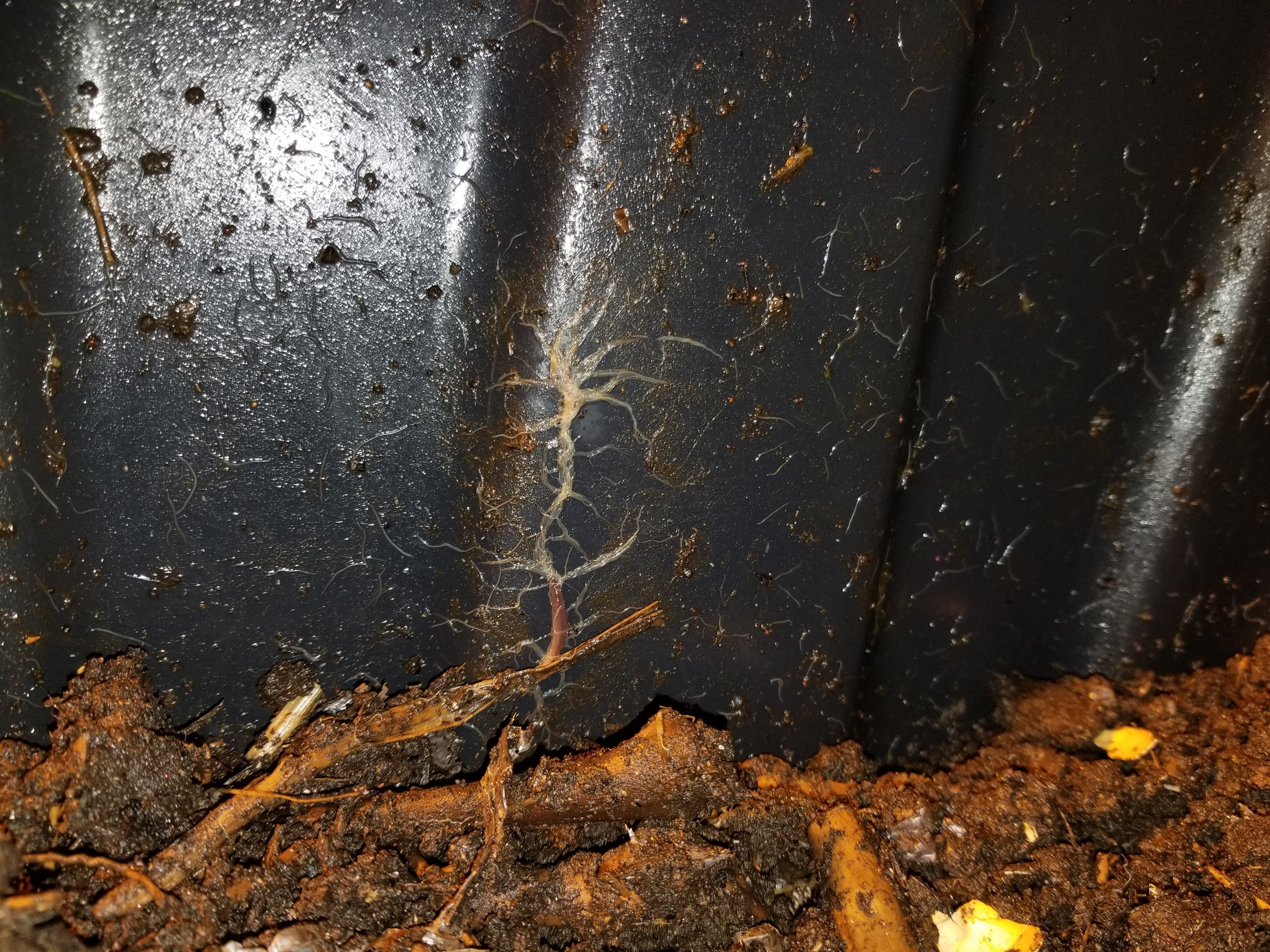You want about 60% brown and 40% green. At the end of the summer I mow and collect my clippings of grass, pecan and oak leaves. Mowing them breaks the up and mixes them well. I fill my compost bins and all remaining mix goes into 23 gallon sorghum tubs until I need them to refill the bins. I also have separate bins for holding grass clipping from the summers mowing's that I add to the compost bins as they begin to breakdown.
This is one of the bins, 5 panel 2 x 4 feet. This bin was emptied into the finish bin in the next pic a month ago. This one is now ready to start another bin.
View attachment 4202773
Here is the finish bin, it is covered with a double layer of weed barrier, allows air and water movement and keep it dark inside the bin. Note the red arrow, it is pointed to the cover inside the bin. This bin was completely full a month ago, the rains, the worms and the microbes have cause this bin to settle about 20"
View attachment 4202774
Here is a view of the compost. I will be harvesting it in about a month, screen it get the worms and any unfinished compost out of the bins and put the compost to finish into some of the 23 gallon sorghum tubs with a few worms to allow them to totally finish, which should take two to three months.
View attachment 4202775
This is the stage that he compost is in now, it needs about two months before it goes into the sorghum tubs.
View attachment 4202787
This is the perfect stage to use a feed for worm bins.
I have two more bins that will go inline with the other bins and will be flipping these bins back and forth during the coming months.
GR




















